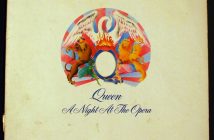The Picture of Dorian Gray is the book that immediately reminds us of the Victorian decadence of its time. Used as evidence in the infamous Oscar Wilde trial, this novel is haunting, thought-provoking, but constantly beautiful.
Victorian aristocrat, Dorian Gray, trades his soul so that he can remain youthful forever, while his portrait bears the aesthetic weight of his sins. Starting with “lines of cruelty” around the eyes and lips when he gilts a lover, Dorian’s portrait becomes more and more grotesque as his misdeeds escalate. It is through this that Wilde draws the link between moral and aesthetic beauty: an aesthete with no moral compass is simply a bad aesthete. Sir Henry Wotton leads Dorian too far astray to live vicariously through a beautiful young man. The artist, Basil Hallward, tries too much to preserve the innocence that he adored so much in his muse. Dorian Gray is the haunting separation of pleasure from its repercussions.
When first published, 500 words were omitted by the publisher due to its homoerotic implications. The next edition was then prefaced with Wilde’s famous ‘art for art’s sake’ outlook, saying that art does not necessarily require a didactic meaning, and beauty can simply exist in its own right. While that may be true, the novel betrays this, as it emphasises the need to balance the human need for pleasure and our moral duty to ourselves and others.
You can watch the trailer for the 1945 Oscar-winning adaptation of The Picture of Dorian Gray below:




